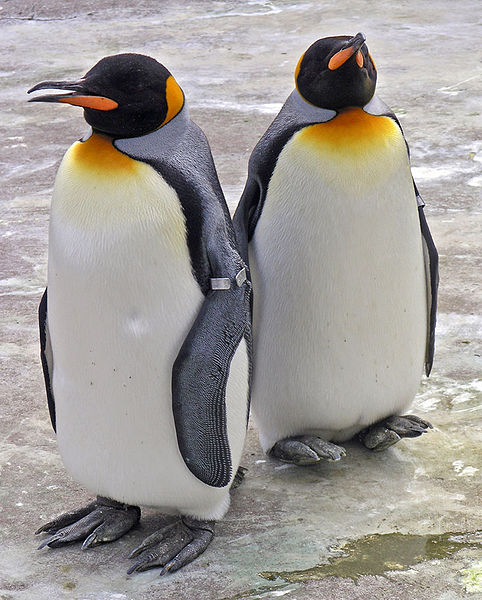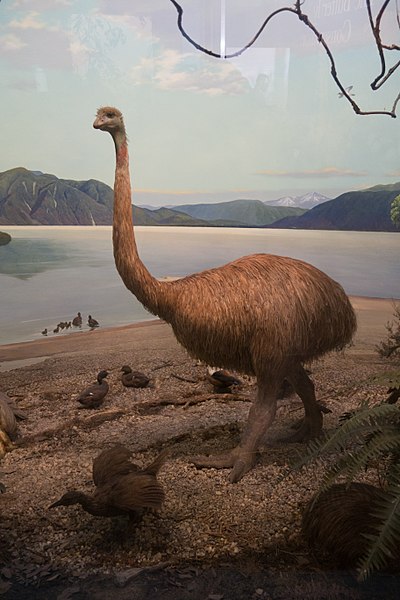The weka, also known as the Māori hen or woodhen is a flightless bird species of the rail family. It is endemic to New Zealand. It is the only extant member of the genus Gallirallus. Four subspecies are recognized but only two (northern/southern) are supported by genetic evidence.
Weka
A buff weka at Willowbank Wildlife Reserve, Christchurch
A western weka on the West Coast near Karamea
Stewart Island weka seen at Sydney Cove on Ulva Island
Flightless birds are birds that, through evolution, lost the ability to fly. There are over 60 extant species, including the well-known ratites and penguins. The smallest flightless bird is the Inaccessible Island rail. The largest flightless bird, which is also the largest living bird in general, is the common ostrich.
King penguins (Aptenodytes patagonicus). Penguins are a well-known example of flightless birds.
An Okarito kiwi (Apteryx rowi), also known as the rowi
Common ostrich (Struthio camelus). Ostriches are the largest extant flightless birds as well as the largest extant birds in general.
An extinct moa. Until the arrival of humans, New Zealand's only mammals were bats and seals, resulting in many bird species evolving to fill the open niches. While many of New Zealand's flightless birds are now extinct, some, such as the kiwi, kākāpō, weka, and takahē have survived to the present day.








